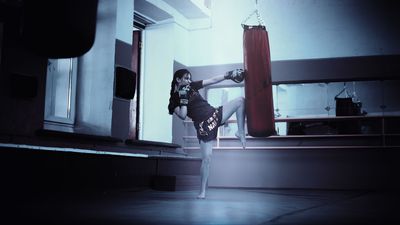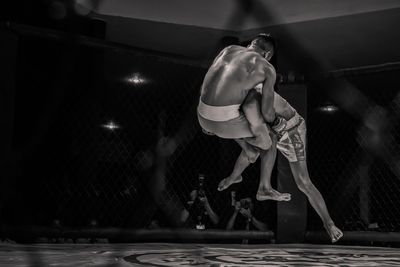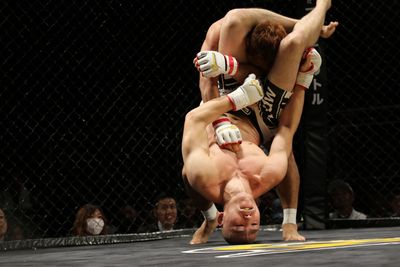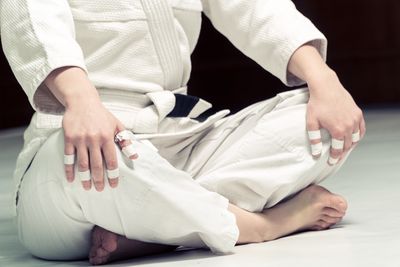by Carmelo De Leon, DPT
In the second part of this series for the combat athlete, we’re going to take a look at how to improve shoulder control. It’s vital to develop this skill because 1. it’s inherently an unstable joint, 2. it’s often targeted for submissions such as the kimura, americana, and omoplata, so the shoulder needs some sort of maintenance, and 3. it helps maintain your frame and posture during both offense and defense.
Looking at the shoulder joint, the humeral head sits on a part of the scapula, also known as shoulder blade, called the glenoid fossa. Comparing the size difference between the 2 objects, it’s essentially a golf ball sitting on a tee. So what keeps the humeral head from simply popping out is a support system that includes the bony structures, ligaments and muscles. We can’t exactly control ligaments or change the shape of the bony surfaces, so we need to focus on the muscles.
Developing strength and motor control of the rotator cuff and scapular muscles will help maintain a long life within combat sports. These muscles are constantly working in stabilizing the shoulder joint when throwing strikes, rolling out of shoulder locks and when maintaining an attacking or defending posture. The following exercises are intended to reduce the risk of injury and enhance recovery for the next training session.
Shoulder CARs ( 2 sets x 5 reps each side)
- Position: Standing or tall kneeling with arms by your side holding your hand in a fist or holding a tennis ball, facing inward.
- Movement: Starting with the right arm, SLOWLY raise your arm, crossing your body up until your arm reaches the right side of your head. Once at this position, turn your fist so that your palm is now facing outward. While keeping your fist in this position, SLOWLY lower your arm behind you until you reach the side of your thigh, still with the palm facing away from you. Now complete the reverse motion.
- Movement tip: Imagine you are trying to draw the biggest circle with your arm without moving the rest of your body.
Downward Dog (3 sets x 15 reps)
- Position: On your hands and feet in a plank position.
- Movement: While keeping your arms straight, push your hips back so that now your body is in the shape of an upside down V. Return to the starting position.
- Movement tip: Because the motion is focused on the shoulders, it’s okay to have a slight bend in the knee so that your hamstrings don’t prevent you from completing the entire movement.
Side Plank w/ Rotations (3 sets x 10 reps each side)
- Position: On your elbow and feet in a side plank with your other arm reaching toward the ceiling. Your top leg will be forward and your bottom leg will be back.
- Movement: While keeping your posture as straight as possible, slowly rotate your body towards the ground while your free hand slowly lowers then reaches under your body toward the opposite side. Slowly, reverse the motion so that you are now in the starting position.
- Movement tip: To the best of your ability, don’t tip your hips toward the ceiling.
Please reach out with any questions on shoulder control exercises or to make an appointment with a physical therapist.




